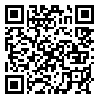Volume 23, Issue 70 (9-2023)
jgs 2023, 23(70): 157-176 |
Back to browse issues page
Download citation:
BibTeX | RIS | EndNote | Medlars | ProCite | Reference Manager | RefWorks
Send citation to:



BibTeX | RIS | EndNote | Medlars | ProCite | Reference Manager | RefWorks
Send citation to:
Baladi De bozorg E, Kabli M H, Hidari A A. (2023). Impact of creativity training on fluid components, ingenuity, flexibility, expansion In hands-free architecture design training workshops. jgs. 23(70), : 10 doi:10.61186/jgs.23.70.157
URL: http://jgs.khu.ac.ir/article-1-3684-en.html
URL: http://jgs.khu.ac.ir/article-1-3684-en.html
1- PhD student of Architecture, Department of Architecture and Urban Planning, Yasuj Branch, Islamic Azad University, Yasuj, Iran, PhD student of Architecture, Department of Architecture and Urban Planning, Yasuj Branch, Islamic Azad University, Yasuj, Iran
2- Faculty Member of Islamic Azad University of Damavand, Tehran, Iran, Faculty Member of Islamic Azad University of Damavand, Tehran, Iran ,Hadikaboli@damavandiau.aac.ir
3- Department of Architecture and Urban Planning, Yasuj Branch, Islamic Azad University, Yasuj, Iran, Department of Architecture and Urban Planning, Yasuj Branch, Islamic Azad University, Yasuj, Iran
2- Faculty Member of Islamic Azad University of Damavand, Tehran, Iran, Faculty Member of Islamic Azad University of Damavand, Tehran, Iran ,
3- Department of Architecture and Urban Planning, Yasuj Branch, Islamic Azad University, Yasuj, Iran, Department of Architecture and Urban Planning, Yasuj Branch, Islamic Azad University, Yasuj, Iran
Abstract: (5923 Views)
One of the fundamental and constructive features of human beings is creativity which plays an important role in the growth and development of human beings and human civilization. Researchers believe that creativity training is effective in enhancing it. The purpose of this study was to investigate the effect of teaching metacognitive components of creativity in hands-free design training workshops in architectural engineering. The purpose of this study was to investigate the effect of educational systems on students' creativity. The statistical population consisted of all first semester students of Architecture of Islamic Azad University, Tehran Branch. The samples were selected through cluster sampling which included 80 students of Islamic Azad University West Tehran Branch. The Torrance Creativity Questionnaire was an optional three-part questionnaire comprising four components of fluidity, ingenuity, flexibility and expansion. Data were analyzed by SPSS software using correlation coefficient and independent groups t-test. The results suggest that the hands-on teaching method of hands-on design has an effect on increasing the creativity of undergraduate students. The amount of ingenuity, fluidity, elasticity, and flexibility among students who participated in this method was higher than those in the usual teaching method. They were also more creative. In addition, it was found that in both teaching methods, there was a significant positive relationship between the four components of creativity with the amount of creativity that each promoted creativity.
Article number: 10
Type of Study: Research |
Send email to the article author
| Rights and permissions | |
 |
This work is licensed under a Creative Commons Attribution-NonCommercial 4.0 International License. |

This work is licensed under a Creative Commons — Attribution-NonCommercial 4.0 International (CC BY-NC 4.0)






